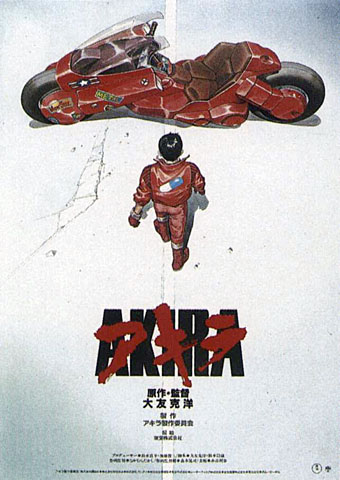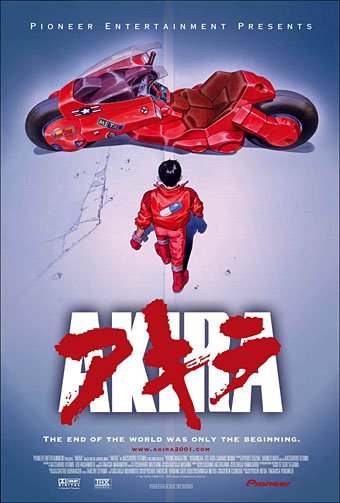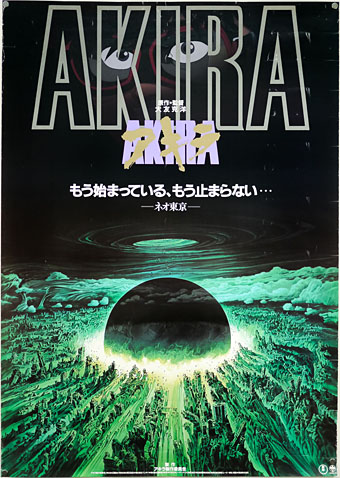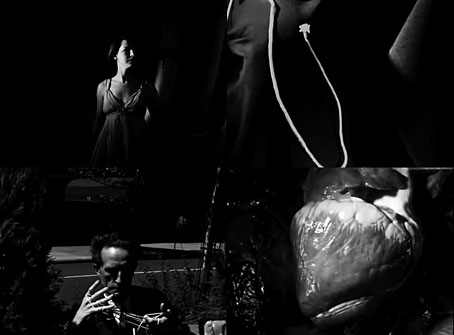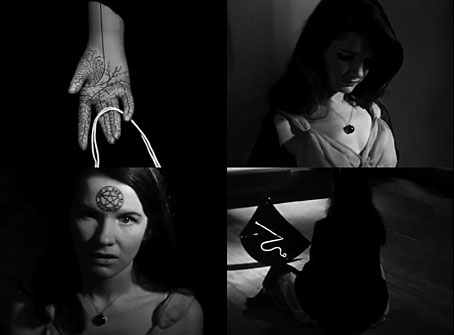Continuing an occasional series. Looking for Akira posters at the weekend reminded me of the way this poster in particular has birthed a long (and growing) series of copyists. The film of Akira went through a few poster designs, with the Japanese ones emphasising the futuristic setting and its apocalyptic scenario. The first poster for US audiences somewhat predictably (and tiresomely) simplified one of the Japanese designs showing Kaneda holding a big gun. The motorcycle design was later reworked for the US in a form which has provided the basis for many subsequent copies, and is very effective even if it communicates next to nothing of the complex storyline. Thirty years after the film’s release, Kaneda’s motorcycle is now familiar enough to be recognisable even to people who haven’t yet seen the film, hence the variations. One consequence of the popularity of this design is that it seems to have shunted the big-gun design into the background.
The rules for the variants is to present a familiar character striding towards a similar form of transport, inanimate or otherwise, with a suitable title below the figure (and, where possible, an overlaid title in Japanese). This trend hasn’t been active for very long but the amount of amateur (or professional) artists with time on their hands means there are too many examples to easily feature here. Most of the examples on the pages here and here are characters from computer games or popular films but the Red Bull ad below shows that the poster design is now familiar enough to function as an advert. As for the Kaneda and his bike, they’re subjected to the inevitable Lego treatment here.

Japanese Grand Prix ad by Red Bull
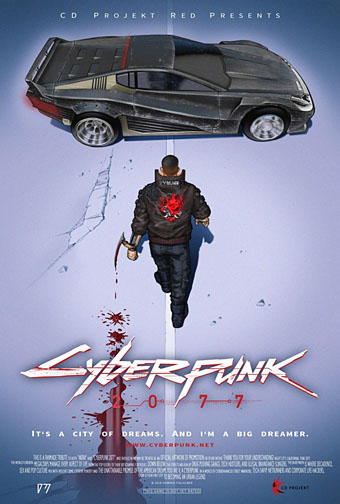
Art by Dominik Figlhuber
Previously on { feuilleton }
• Design as virus 18: Sound Effects
• Design as virus 17: Boris and Roger Dean
• Design as virus 16: Prisms
• Design as virus 15: David Pelham’s Clockwork Orange
• Design as virus 14: Curse of the Dead
• Design as virus 13: Tsunehisa Kimura
• Design as virus 12: Barney’s faces
• Design as virus 11: Burne Hogarth
• Design as virus 10: Victor Moscoso
• Design as virus 9: Mondrian fashions
• Design as virus 8: Keep Calm and Carry On
• Design as virus 7: eyes and triangles
• Design as virus 6: Cassandre
• Design as virus 5: Gideon Glaser
• Design as virus 4: Metamorphoses
• Design as virus 3: the sincerest form of flattery
• Design as virus 2: album covers
• Design as virus 1: Victorian borders

